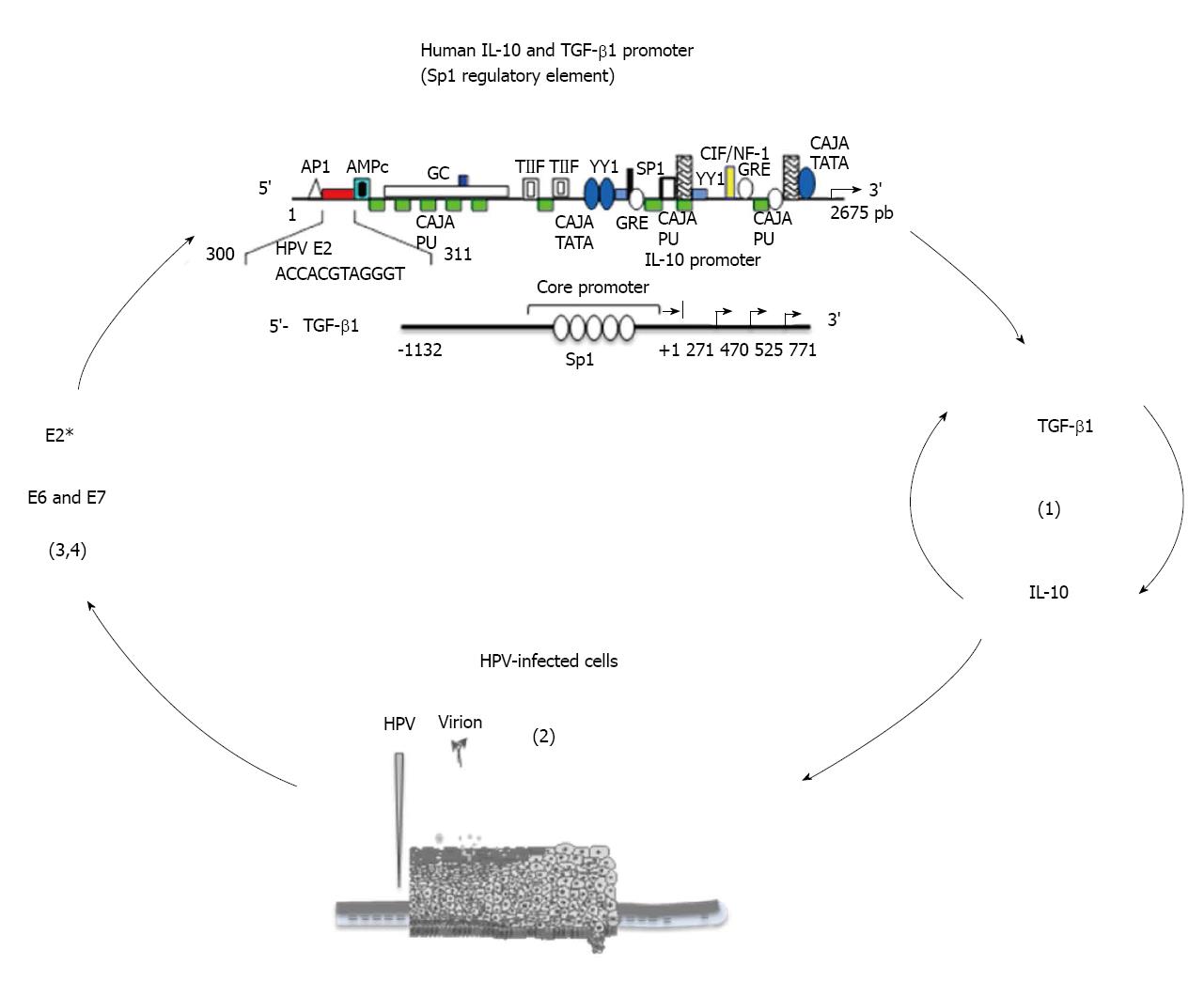Copyright
©2014 Baishideng Publishing Group Inc.
World J Clin Oncol. Oct 10, 2014; 5(4): 753-763
Published online Oct 10, 2014. doi: 10.5306/wjco.v5.i4.753
Published online Oct 10, 2014. doi: 10.5306/wjco.v5.i4.753
Figure 2 Vicious cycle between Interleukin-10, transforming growth factor-β1, and human papillomavirus.
(1) IL-10 enhances TGF-β1 expression and vice-versa[76]; (2) IL-10 induces transcription of HPV-16 E6 and E7[56]; (3) HPV E6 and E7 proteins induce activation of TGF-β1 promoter through Sp1 recognition sequence[21]; (4) Human gene IL-10 regulatory regions posses Sp1 regulatory elements, which suggests that HPV E6 and E7 proteins may bind to IL-10 regulatory region to activate IL-10 gene transcription, just as HPV E2* protein does[74], and may induce IL-10 expression in HPV-transformed cervical cells. HPV can enhance the expression of cytokines TGF-β1 or IL-10, which inhibit T cell functions and augment viral proteins, contributing to the persistence of HPV infection and progression of HPV-related cervix lesions to cervical cancer. The production and activity of these two cytokines, IL-10 and TGF- β1, are interrelated and likely involve a positive feedback loop in which IL-10 enhances the expression of TGF-β1 and vice-versa[76]. In fact, IL-10 not only enhances the production of TGF-β1 but also controls the ability of target cells to respond to TGF-β1. This involves the IL-10-mediated restoration of the expression of TGF-β1 receptor 2 in recently activated T cells, which usually down-regulate this receptor and become desensitized to the inhibitory effects of TGF-β1. Conversely, TGF-β1 can promote the production of IL-10[76]. IL-10: Interleukin-10; TGF-β1: Transforming growth factor-β1; HPV: Human papillomavirus.
- Citation: Torres-Poveda K, Bahena-Román M, Madrid-González C, Burguete-García AI, Bermúdez-Morales VH, Peralta-Zaragoza O, Madrid-Marina V. Role of IL-10 and TGF-β1 in local immunosuppression in HPV-associated cervical neoplasia. World J Clin Oncol 2014; 5(4): 753-763
- URL: https://www.wjgnet.com/2218-4333/full/v5/i4/753.htm
- DOI: https://dx.doi.org/10.5306/wjco.v5.i4.753









